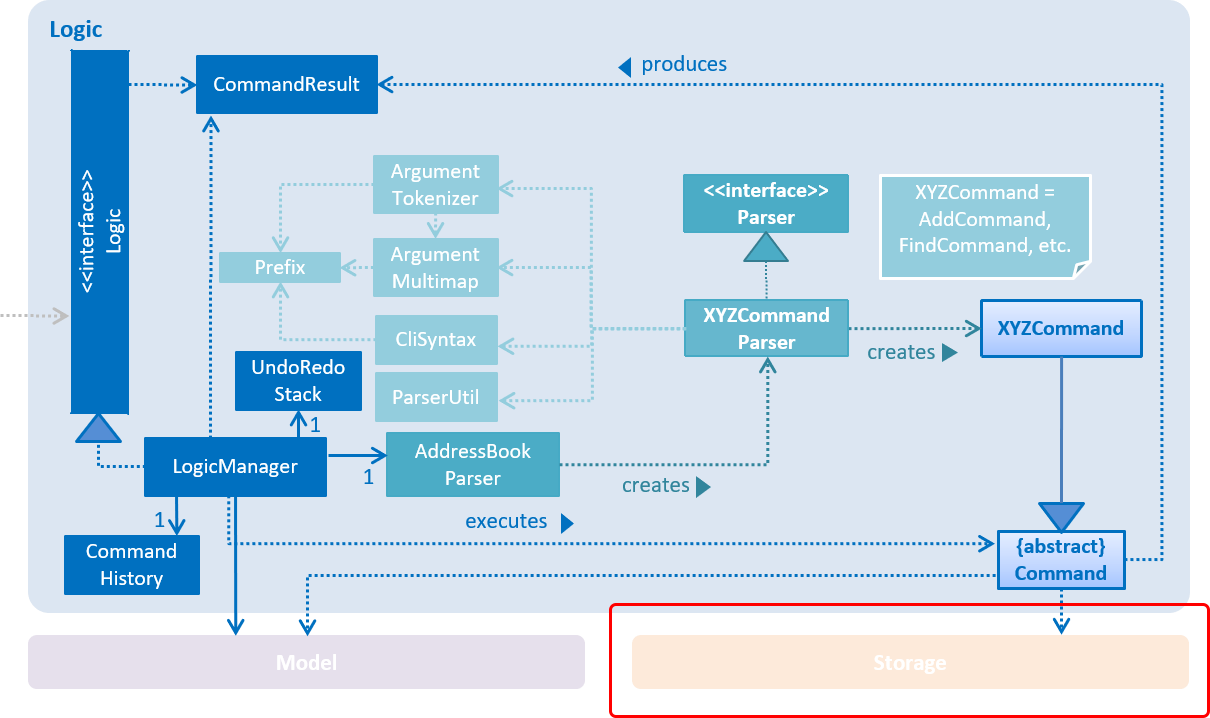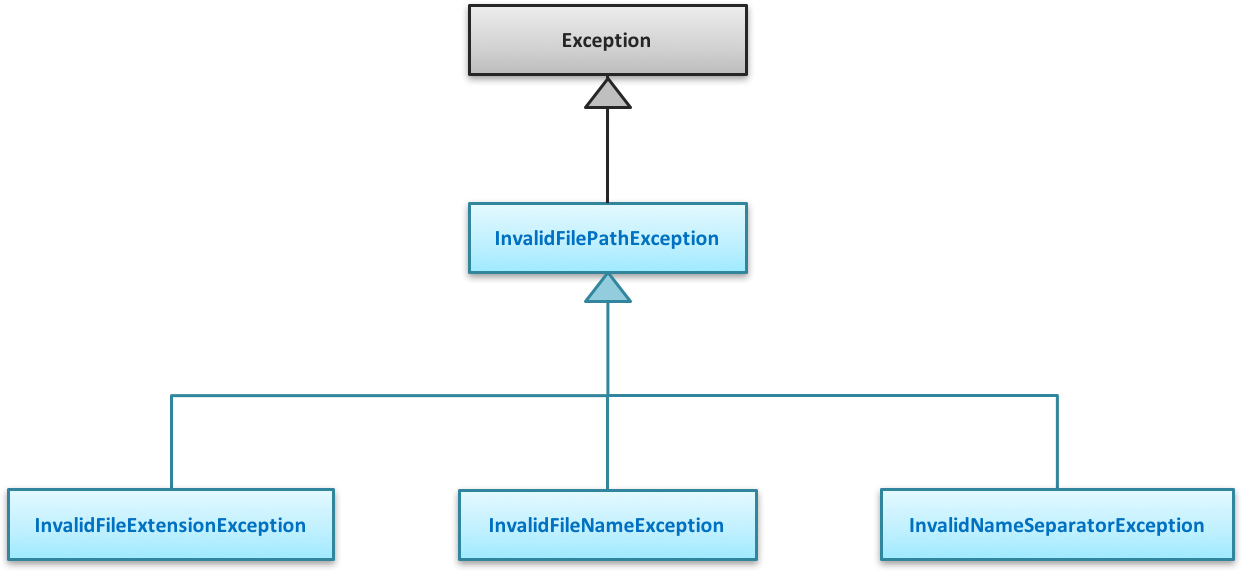Project: BoNUS
BoNUS is a desktop personal organizer application targeted at National University of Singapore (NUS) students, with Contacts, Events and Calendar being the main focus of this application. While users interact with it mainly through a Command Line Interface (CLI), BoNUS also provides a simple Graphical User Interface (GUI) for a better User Experience (UX).
This project is the result of a semester-long Software Engineering module, CS2103T, in NUS. The backend of BoNUS is written primarily in Java, while JavaFX is used for the frontend design. Being built based on Address Book (Level 4), an initiative from the SE-EDU team, the current codebase has expanded to around 10 kLoC.
Code contributed: [Functional code] [Test code]
Importing data : (i)import
From .xml format
Imports the data in an external XML file, including data from all three components: Contacts, Events and Calendar,
into the current address book of BoNUS.
Format: (i)import FILEPATH
|
The default data format is |
Examples:
-
For
Windowsusers:
import C:\Users\John Doe\Documents\bonus.xml -
For
macOSandLinuxusers:
import /Users/John Doe/Documents/bonus.xml
|
For |
Exporting data : (p)export
To .xml format
Exports the current data in the application, including data from all three components: Contacts, Events and
Calendar, to an external location.
Format: (p)export FILEPATH
Examples:
-
For
Windowsusers:
export C:\Users\John Doe\Documents\bonus.xml -
For
macOSandLinuxusers:
export /Users/John Doe/Documents/bonus.xml
|
For |
Justification
The support for import and export capabilities is essential to increase the user adoption of BoNUS, as these features allow users to incorporate BoNUS more seamlessly in their daily routines. Simply by providing the desired file location, users are able to import data into BoNUS, and export all data stored in the application to somewhere safe.
As for the latest BoNUS v1.5 official release, users are constrained to import data from, or export data to a BoNUS-recognized XML file. Nevertheless, more file formats will be supported in future releases to truly unleash the full potential of the application.
Import & export XML mechanism
In order to open up more possibilities to BoNUS, we have introduced the import and export commands. We are using
ImportXmlCommand and ExportCommand to support importing and exporting of address book data through XML files.
In the following sections, we will focus on how these commands depend on the Storage component to retrieve external
data, as well as the file path validation mechanism adopted on a high-level basis.
Implementation
External Data Access
In order to achieve their tasks, both import and export commands natively require access to the external
environment, unlike other commands. Hence, these commands are designed to depend directly on the Storage component.
The dependence of Storage in import and export is achieved through the Command.setStorage(Storage) method. This
method mimics the existing Command.setData(Model, CommandHistory, UndoRedoStack) method, where only commands that make
use of the relevant data will override this method to gain access to the dependencies.
The following shows the implementation of Command.setStorage(Storage), which is not overridden commands other than
ImportXmlCommand and ExportCommand:
public void setStorage(Storage storage) {
// intentionally left empty
}In ImportXmlCommand and ExportCommand, the overridden method is implemented in this way:
@Override
public void setStorage(Storage storage) {
this.storage = storage;
}Through this implementation, commands that depend directly on the Storage component (ie. import and export) are
able to gain full access to Storage, while commands that do not rely on Storage remain weakly coupled to it. The
following class diagram of the Logic component reflects the overall implementation on an architectural-level point of
view:

Figure 4.5.1.1 : Structure of the Logic Component
File Path Validation
File paths, as required by import and export commands, are validated during the execution of the corresponding
command. The following sequence diagram shows an example of how file path validation is performed prior exporting the
address book data:

Figure 4.5.1.2 : Sequence Diagram for Export Command
To facilitate better handling of invalid file paths and to provide appropriate feedback to the user, several exception
classes, all of which are derived from the InvalidFilePathException class, have been implemented. The following shows
the inheritance diagram of the above-mentioned exception classes:

Figure 4.5.1.3 : Structure of Exception Classes related to File Path Validation
With that, we are able to ensure that data would be exported to or imported from a truly valid file path as specified by the user, while being able to inform users on the mistakes that they have made.
Design Considerations
Aspect: Implementation of Storage dependency for ImportXmlCommand and ExportCommand
Alternative 1 (current choice): Add a new setStorage(Storage) method in Command
Pros: Provides direct access to Storage for commands that only requires it.
Cons: There is an inherent dependency on Storage for all commands, although the coupling is weak.
Alternative 2: Raise a BaseEvent in the EventsCenter through Model
Pros: Completely decouples Command from Storage.
Cons: The need for access to Storage is not a side-effect as with other commands that mutate the address book
(eg. add, delete etc.). The dependency of Storage is part of their native behaviour.
Aspect: Location for Implementation of File Path Validation
Alternative 1 (current choice): In Storage
Pros: Validation is not just done for user input file paths (ie. via import and export commands), but also for the address book file path as defined in the user’s preferences (ie. preferences.json).
Cons: Validation is performed after every execution of an UndoableCommand due to the saving of the address book.
Alternative 2: In CommandParser
Pros: Validation will not be done after every execution of an UndoableCommand unnecessarily.
Cons: File path validation may also be required for other purposes.
Other contributions
-
Added an informative feedback message to notify users what command they have undone or redone (Pull request #61)
-
Introduced the support of command aliases, or shorthand-equivalent commands (Pull request #38)
-
Assisted Project AcquaiNote in bug reporting and feature suggestions (Issues #74, #75, #76, Pull requests #77, #79)